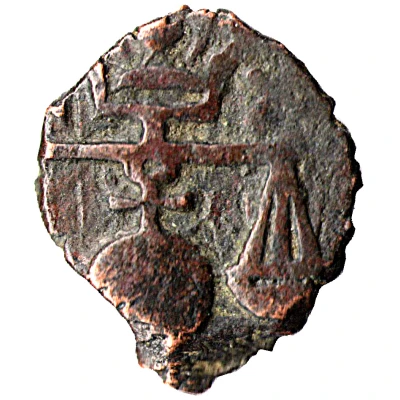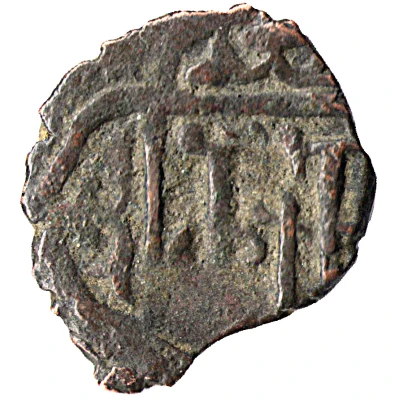


© D.Mikeladze
½ Puli - Heraclius II
1179 (1766) year| Copper | 2.4 g | 17 mm |
| Issuer | Georgia › Kingdom of Kartli-Kakheti (1762-1801) |
|---|---|
| King | Heraclius II (ერეკლე II) (1762-1798) |
| Type | Standard circulation coin |
| Year | 1179 (1766) |
| Calendar | Islamic (Hijri) |
| Value | ½ Puli (1⁄80) |
| Currency | Abazi (-1801) |
| Composition | Copper |
| Weight | 2.4 g |
| Diameter | 17 mm |
| Shape | Round (irregular) |
| Technique | Hammered |
| Demonetized | Yes |
| Updated | 2024-10-04 |
| Numista | N#116855 |
|---|---|
| Rarity index | 91% |
Reverse
In different frames, Georgian Asomtavruli legend in abbreviation for the name of Erekle
Persian lettering in the lower half
Scripts: Georgian (Asomtavruli), Persian
Lettering:
ႰႩႪ
ضرب
١١٧٩
تفليس
ضرب
Translation:
RKL ( for eReKLe)
Struck
1179
Tiflis
Edge
Irregular hammered
Interesting fact
The ½ Puli coin from the Kingdom of Kartli-Kakheti (1762-1801) was minted during the reign of King Heraclius II, who was also known as Erekle II. He was a prominent figure in Georgian history and played a significant role in the country's political and cultural development during his reign. The coin's design features an image of King Heraclius II on one side and the Georgian coat of arms on the other. It's made of copper and weighs 2.4 grams, making it a unique and valuable collector's item for numismatists interested in the history of Georgia and its currency.